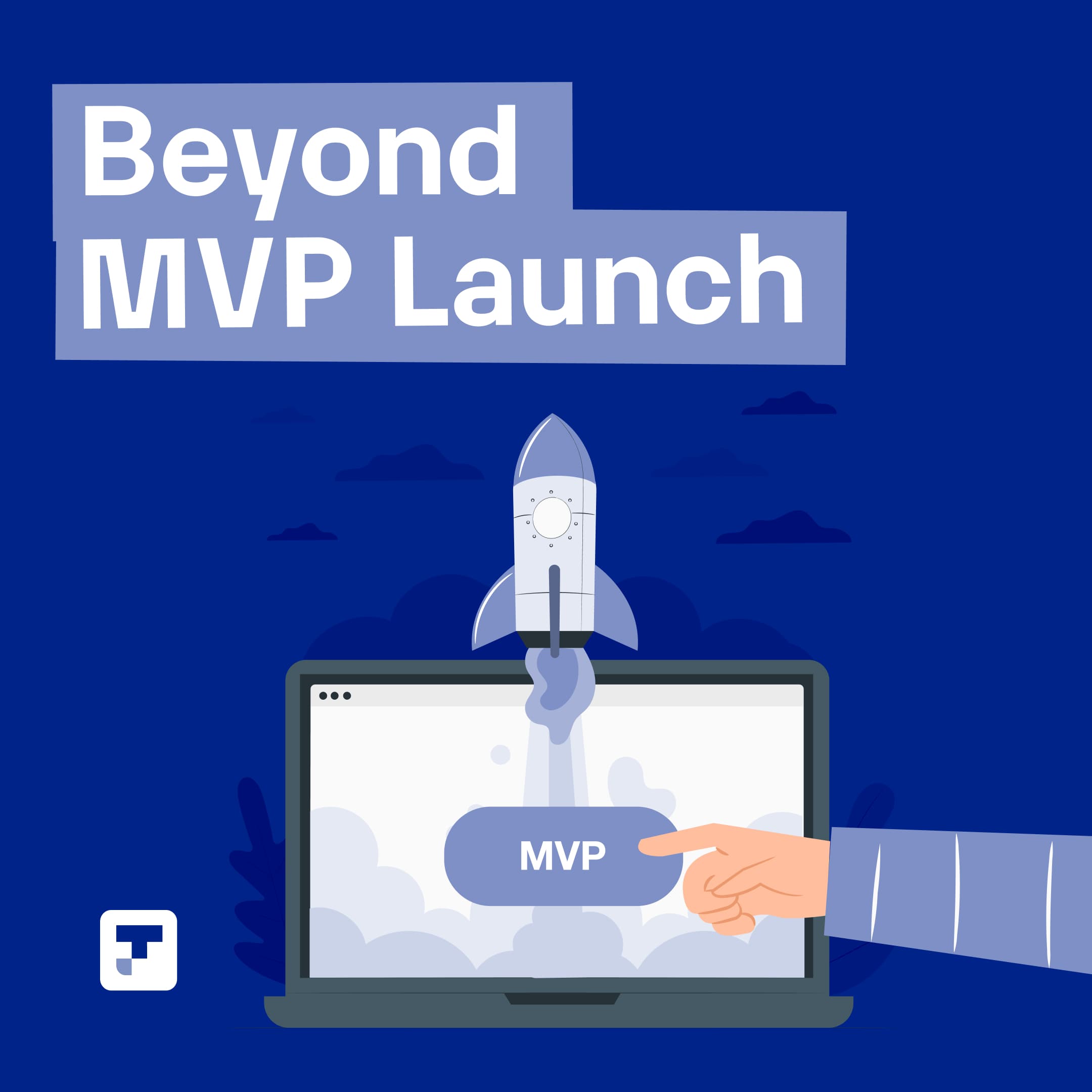Blog
All the Software Development and AI Trends to Be Aware Of

Introduction
As we prepare to usher in 2024, it feels like so much has happened in the software development and AI space.
The convergence is reshaping how we think about development and product pushing boundaries of what’s possible in the tech space.
For entrepreneurs, founders, and developers, understanding these trends is not just about keeping up but staying competitive, innovative, and relevant in a rapidly changing market.
In today’s article, we’ll explore the most significant software development and AI trends to be aware of in 2024, offering insights into the technologies that will shape our future.
Whether you are a seasoned SaaS founder, or developer or thinking of getting started in this space, this article will look to shed light on where we are and where we are headed.
The Rise of AI in Software Development
If we can briefly go back to December 2022, Open AI’s ChatGPT was beginning to cause waves as people began to try and explore the power of their language model.
In 2023, we saw a huge rise in the number of startups that were integrating these language models and creating really powerful AI-powered apps, with the most common use cases being in the customer service and complaint sector.
AI-driven code generation and automation were also at the forefront of this transformation. These tools are not just novelties, they are becoming essential components in the developer’s toolkit.
2024 will mark a pivotal year in the integration of AI into software development.
AI algorithms have progressed to the point where they can understand programming languages, context, and even coding intent.
Tools like GitHub Copilot, powered by Open AI’s Codex, are examples of how AI can assist in writing code, suggesting entire blocks of code, and even debugging existing code.
The implications of this are profound. Development cycles have now become shorter, more efficient, and less prone to human error.
AI’s ability to automate repetitive and mundane tasks allows developers to focus on more complex and creative aspects of software development.
Predictive Analysis in Software Development
Another significant trend is the use of predictive analytics in software development.
The integration of AI has allowed these systems to analyze vast amounts of data from past development projects to predict outcomes, identify potential risks, and suggest optimal development paths
This means better software project management, resource allocation, and risk mitigation.
Predictive analytics are also revolutionizing how user feedback is incorporated into the development process.
AI algorithms can sift through user data and feedback to pinpoint areas you can improve on, predict the needs of your users, and even tailor the development process to meet those needs effectively.
As we move into 2024, the fusion of AI with software development is not only changing the way we build software, but it is also redefining the very essence of what software can be.
Advancements in Machine Learning and Deep Learning
New Algorithms and Models
Machine Learning (ML) and Deep Learning (DL) have also seen a huge leap forward.
Newer algorithms are focusing on efficiency and adaptability, allowing them to learn from less data and make more accurate predictions.
One of the most exciting advancements is in the area of transfer learning and few-shot learning models.
These models require minimal data to learn new tasks, making ML and DL accessible to industries and organizations that might not have vast data sets.
Another noteworthy development in generative models like GPT-4 which have shown remarkable abilities in image generation.
Enhanced Capabilities in Data Processing and Analysis
The integration of ML and DL models with big data technologies is enabling the analysis of data at a scale and speed that was previously unattainable.
This is particularly transformative for sectors like healthcare, finance, and climate science, where rapid and accurate data analysis can lead to groundbreaking insights and solutions.
In 2024 we will see a shift with more intelligent, efficient, and responsive AI systems, paving the way for innovations that were previously unimaginable.
Build a simple product that works and converts.
Get step-by-step guidance from product managers, UI/UX designers, and tech leads, taking you from idea to launch
The Integration of AI with DevOps (AIOps)
Artificial Intelligence for IT Operations (AIOps) is an umbrella term for the use of big data analysis, machine learning, and other AI technologies to automate the identification and resolution of common IT issues.
Automating Deployment and Monitoring
This trend will see a huge leap in automation aspects of the deployment and monitoring phases in the software development cycle.
AI-driven automation in deployment entails using intelligent algorithms to streamline and optimize the release of software.
This involves predicting potential issues before deployment, automating routine deployment tasks, and ensuring that the software launch is efficient and effective.
Predictive Maintenance and Continous Improvement
By using machine learning models, businesses can now foresee and mitigate potential downtimes or performance issues, proactively addressing them before they impact their users.
AI tools provide actionable insights for ongoing enhancements meaning that software products are continually refined to better meet user needs and adapt to changing market conditions.
2024 will see deeper integrations between AI and DevOps, paving the way for more automated, efficient, and user-centric software development processes.
Quantum Computing and AI
Quantum computing, although still in its nascent stages, has made remarkable progress in recent years.
Unlike classical computing, which relies on bits (0s and 1s) quantum computing uses quantum bits or qubits, which can exist in multiple states simultaneously.
This means that quantum computers can process complex computations at speeds unattainable by traditional computers.
Potential Impact on AI and Software Solutions
The intersection of quantum computing and AI holds immense potential. This acceleration could lead to significant advancements in areas such as drug discovery, financial modeling, and climate modeling.
This will be particularly relevant for industries dealing with large volumes of data and complex variables, where quantum-powered AI can provide insights and solutions far beyond the reach of classical computing methods.
Ethical AI and Responsible Development
The topic of AI and ethics is and will continue to be a huge topic of discussion in 2024 and beyond.
A significant concern is the issue of bias and fairness in AI models. AI systems, inherently dependent on the data they are fed, can inadvertently perpetuate and amplify biases present in the data.
This has profound implications in sensitive areas like financial services, hiring practices, law enforcement, and healthcare.
Addressing these biases requires a multifaceted approach. It starts with diverse and inclusive data sets that reflect a broad spectrum of demographics and scenarios.
In addition, developers are employing advanced techniques like fairness algorithms and ethical AI auditing to identify and mitigate bias in AI models.
Regulations and Ethical Guidelines
Governments and international bodies are increasingly recognizing the need for regulations to govern AI development and deployment.
These regulations aim to ensure transparency, accountability, and ethical usage of AI technologies and we are going to see more regulations in 2024.
AI in Cloud Computing
AI-powered cloud services are providing businesses and individuals with capabilities that were either previously cost-prohibitive or simply inaccessible.
These services range from AI-driven data analytics and machine learning platforms to automated customer service and enhanced security protocols.
One of the key benefits of AI in cloud computing is the significant enhancement in cost-efficiency and scalability.
AI algorithms are optimized including intelligent load balancing, predictive maintenance, and automated scaling based on real-time demand.
Businesses can now scale their operations up or down with unprecedented ease and flexibility, adapting to market demands without the need for substantial upfront investment in IT infrastructure.
This fusion is paving the way for more scalable and intelligent cloud solutions, reshaping the technology landscape for businesses and consumers alike.
AI-Driven Cybersecurity Enhancements
Predictive Threat Analysis
AI-driven cybersecurity has become a critical defense mechanism against increasingly sophisticated cyber threats.
A key component of this is predictive threat analysis. AI algorithms, equipped with the ability to analyze vast data sets and learn from patterns, are being utilized to predict and identify potential security threats.
In 2024, we will see more advanced AI systems that can continuously monitor network traffic, user behavior, and other data sources to identify anomalies that could indicate a cyber threat.
Automated Vulnerability Assessment Response
Another crucial aspect of AI-driven cybersecurity that we will see make leaps forward in 2024 is the automation of vulnerability assessment and response.
Modern AI tools are now capable of scanning systems and networks for vulnerabilities at scale and speed impossible for human teams.
As cyberattacks grow and become more sophisticated AI is going to help organizations, big and small, to safeguard their digital ecosystems in 2024 and beyond.
The Role of AI in User Experience and Interface Design
As we advance into this new era of AI, enhancing how users experience and interact with your products and services will not only become easy but also a must-do if you are going to compete and remain relevant.
We’ve seen how data is at the center of AI and its advancement in not just the software development space.
AI algorithms will become better and better at analyzing usage patterns and how users interact with different elements of the product and services allowing you to better personalize those experiences and improving your user experience and interface design.
Accessibility has also seen a huge leap. AI has proven useful in analyzing designs and recommending improvements to ensure accessibility for users with disabilities.
This includes analyzing color contrasts, providing alternative text for images, and identifying other potential accessibility issues.
Edge AI: Bringing AI to the Edge Computing
Edge computing is a paradigm that brings computation and data storage closer to the sources of data, rather than relying on a central location that may be far away.
This approach is particularly useful for scenarios where real-time processing and quick decision-making are crucial.
By minimizing the latency that comes with sending data to distant servers and back, edge computing enables faster responses and more efficient handling of data.
Edge AI is therefore the integration of AI where complex AI models can now run on smaller, less-power-intensive devices.
What are some use cases for this?
Smart Cities – Traffic management systems utilize Edge AI to process data from cameras and sensors, optimizing traffic flow and reducing congestion in real time.
Healthcare – Wearable devices use Edge AI to monitor vital signs and alert users to potential health issues thus facilitating immediate and personalized healthcare responses.
Industrial sector – Edge AI is allowing factories to maintain their machinery by using predictive maintenance to reduce downtimes.
Automotive Vehicles – Edge AI is crucial for the safety and efficiency of self-driving vehicles. This is being done through processing sensor data directly on the vehicle allowing for quicker and more reliable decision making.
The Future Workforce: AI’s Impact on Software Development Jobs
The holistic effect of AI on the workforce has seen a huge debate ever since ChatGPT exploded on the scene.
The biggest shift we’ve seen and not just in the software industry is the capacity for AI to take over repetitive tasks and automate a lot of processes.
It’s important to note that, these LLM (large language models) still need someone who is adept at his or her role to use and prompt these systems in order for them to be useful
Therefore, we won’t see AI completely replacing the workforce, at least not yet, but what we will see, especially in 2024 is a huge difference between companies and teams that embrace the use of AI and those that don’t.
The teams that use AI well, in the case of software developers, will be able to complete tasks much quicker than those that don’t. Leading to them going to market quicker, validating their ideas quicker, and making iterations faster.
The collaboration between AI and human intelligence is fostering a new era of innovation, allowing teams to now focus on more complex tasks and exploration of new possibilities.
Conclusion
As AI models continue to advance, their impact across these and other industries will only deepen. 2024 and beyond will be characterized by even more personalized, efficient, and secure digital experiences.
The key will be human and AI partnership because these LLMs are using the current human knowledge base, and will only get better if the humans using them to do their work also get better.
Are you interested in how your company can take advantage of AI in 2024, get in touch with us today! We’ve been building AI-powered apps for a while now, and we really love doing them!
Read more


Case study:
Stock Timing Tech
How Stock Timing Tech Overcome Technical Hurdles and Launched their App in 6 Months.

The Impact of Advanced Fleet Management Software

The Top Loan Management Software Trends and Innovations

User Stories: What They Are, and How They Shape the Quality of Your Product

Moving Your MVP to the Next Stage of Growth
Create a free plan for growth
Speak to Victor and walk out with a free assessment of your current development setup, and a roadmap to build an efficient, scalable development team and product.
“Victor has been great. Very responsive and understanding and really knows his stuff. He can go the extra mile by tapping into his prior experiences to help your company out. Really enjoyed working with him.”
Founder of Agency360

Victor Purolnik
Trustshoring Founder
Author, speaker, and podcast host with 10 years of experience building and managing remote product teams. Graduated in computer science and engineering management. Has helped over 300 startups and scaleups launch, raise, scale, and exit.